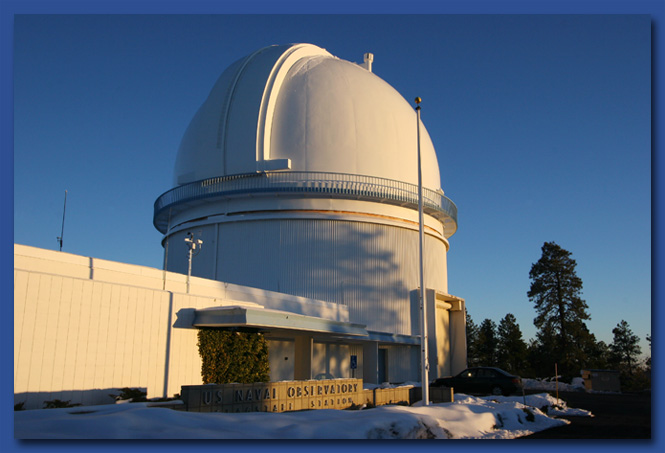

The island of short-term stability around the main 1:1 resonance shrinks with increasing eccentricity at a fixed low degree of prolateness and completely vanishes at approximately 0.8. We quantify the dependence of the order–chaos boundaries on shape by changing a prolateness parameter, and find that the main 1:1 spin-orbit resonance disappears for specific moderately prolate shapes already at eccentricities as low as 0.3.
#NAVAL OBSERVATORY TRIAL#
The domains of chaotic rotation are numerically investigated over the entire range of eccentricity with a combination of trial integrations of Euler’s equations of motion and the GALI(k) method.
#NAVAL OBSERVATORY FULL#
Here, we present the full 3D rotational equations of motion around all three principle axes for triaxial minor planets and two independent methods of numerical solution based on Euler rotations and quaternion algebra. At small orbital eccentricity values, rotation is short-term orderly and predictable within the commensurate spin-orbit resonances, while at eccentricity approaching unity, chaos completely takes over. This observational study has important implications for understanding the initiation of SBO-CMEs and their interaction with the heliospheric surroundings.Ĭelestial bodies approximated with rigid triaxial ellipsoids in a two-body system can rotate chaotically due to the time-varying gravitational torque from the central mass. We estimate that 18 ± 11% of the CME’s azimuthal magnetic flux has been eroded through magnetic reconnection and that this erosion began after a heliospheric distance of ∼0.35 AU from the Sun was reached. From inner-heliospheric Parker Solar Probe (PSP) observations, it is evident that the SBO-CME is interacting with the heliospheric magnetic field and plasma sheet structures draped about the CME flux rope. With the aid of extrapolated coronal fields and remote observations of the off-limb low corona, we study the initiation of an SBO-CME preceded by consecutive CME eruptions consistent with a multi-stage sympathetic breakout scenario. Although they are typically slow and lack clear low-coronal signatures, they can cause geomagnetic storms. Streamer-blowout coronal mass ejections (SBO-CMEs) are the dominant CME population during solar minimum. The data obtained to date are consistent with resonant (librating) and non-resonant (circulating) solutions additional observations will show whether the pair is actually locked in resonance or just near-resonant.


We also demonstrate that the two outer planets are ripe for atmospheric characterisation using transmission spectroscopy, especially given their position in the CVZ of JWST. The two outer planets have periods of $\rm 56.0067 \pm 0.0003~days$ and $\rm 84.2597_$, making planet b a dense, massive planet while c and d are both under-dense. All of our data products found throughout these pages are also accessible under "Data Products".We report on the discovery and characterisation of three planets orbiting the F8 star HD 28109, which sits comfortably in TESS’s continuous viewing zone.
#NAVAL OBSERVATORY ARCHIVE#
USNO's CRF responsibilities include hosting four international astronomical centers of expertise: information about USNO's Double Star activity, including products such as the Washington Double Star Catalog, can be found under the "IAU Double Star Center" information about the Internation Celestial Reference System can be found under the "IERS ICRS Center" Very Long Baseline Interferometry (VLBI) information and products can be found under "IVS Analysis Center" and information and data products related to reference frame objects can be found in the Fundamental Reference Image Data Archive (FRIDA), under the "IVS Analysis Center for Source Structure". The site tree for all of our pages is located on the left side and can be used to easily navigate between different areas. These webpages are organized so that users are able to find information related to specific areas of research or interests. These webpages provide information on the roles and responsibilities that USNO has to the national and international communities as well as our products that are used by the astronomical and geodetic communities. Instrumentation includes the 61 inch Kaj Strand Telescope and the Navy Precision Optical Interferometer (NPOI), located on nearby Anderson Mesa. Naval Observatory, Flagstaff Station (NOFS, shown above), established in 1955, is USNO’s primary dark sky observatory site.


 0 kommentar(er)
0 kommentar(er)
